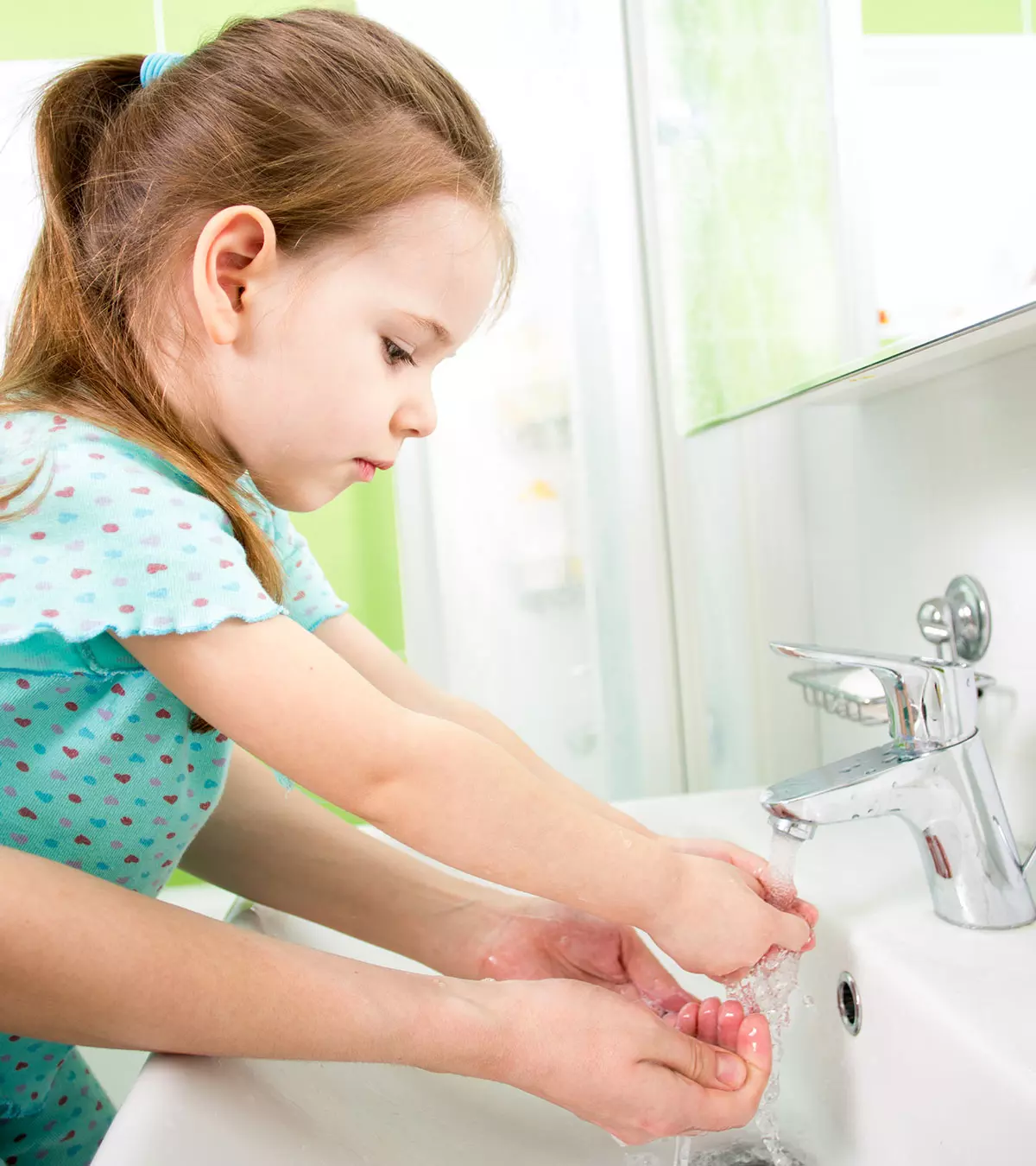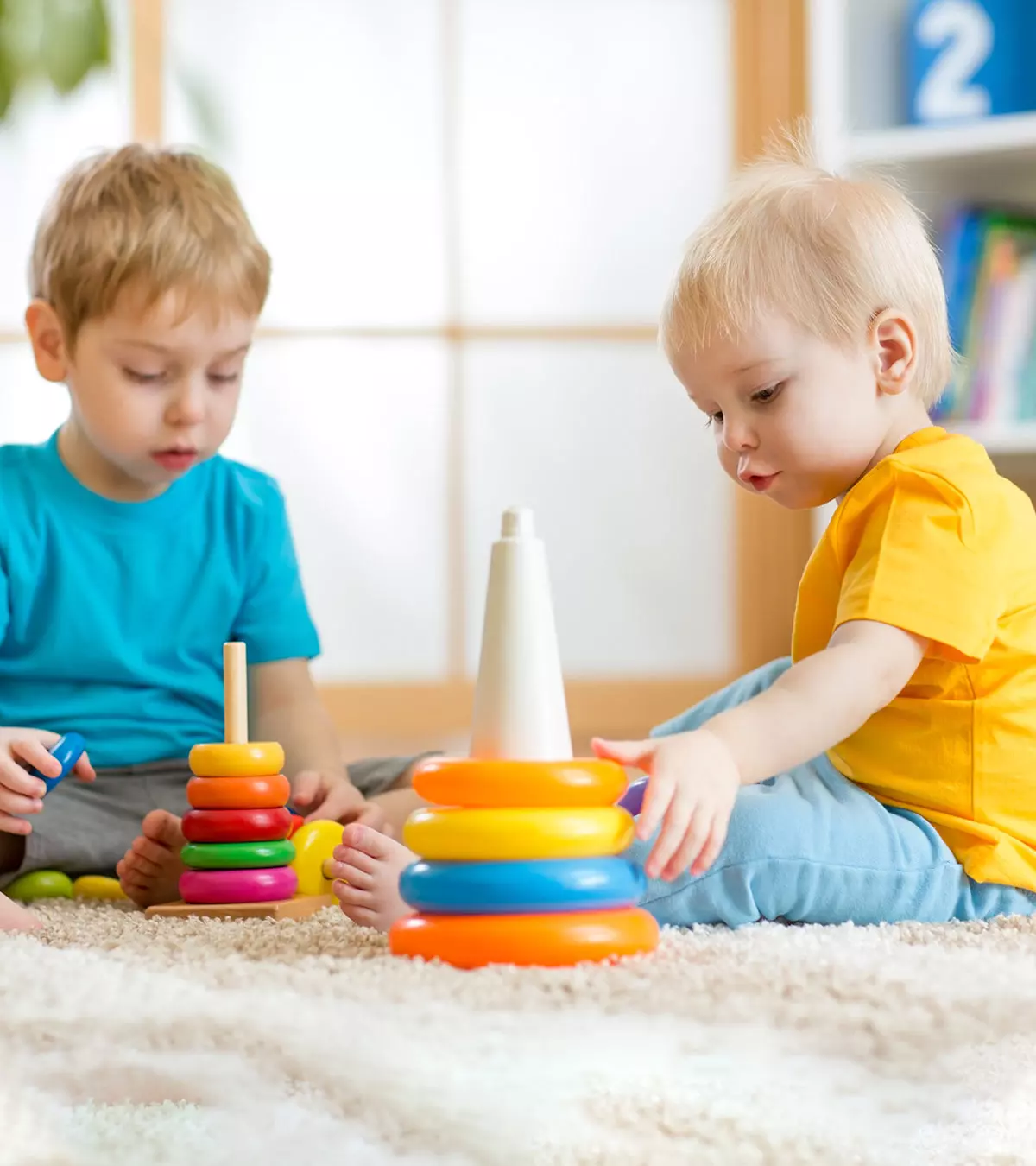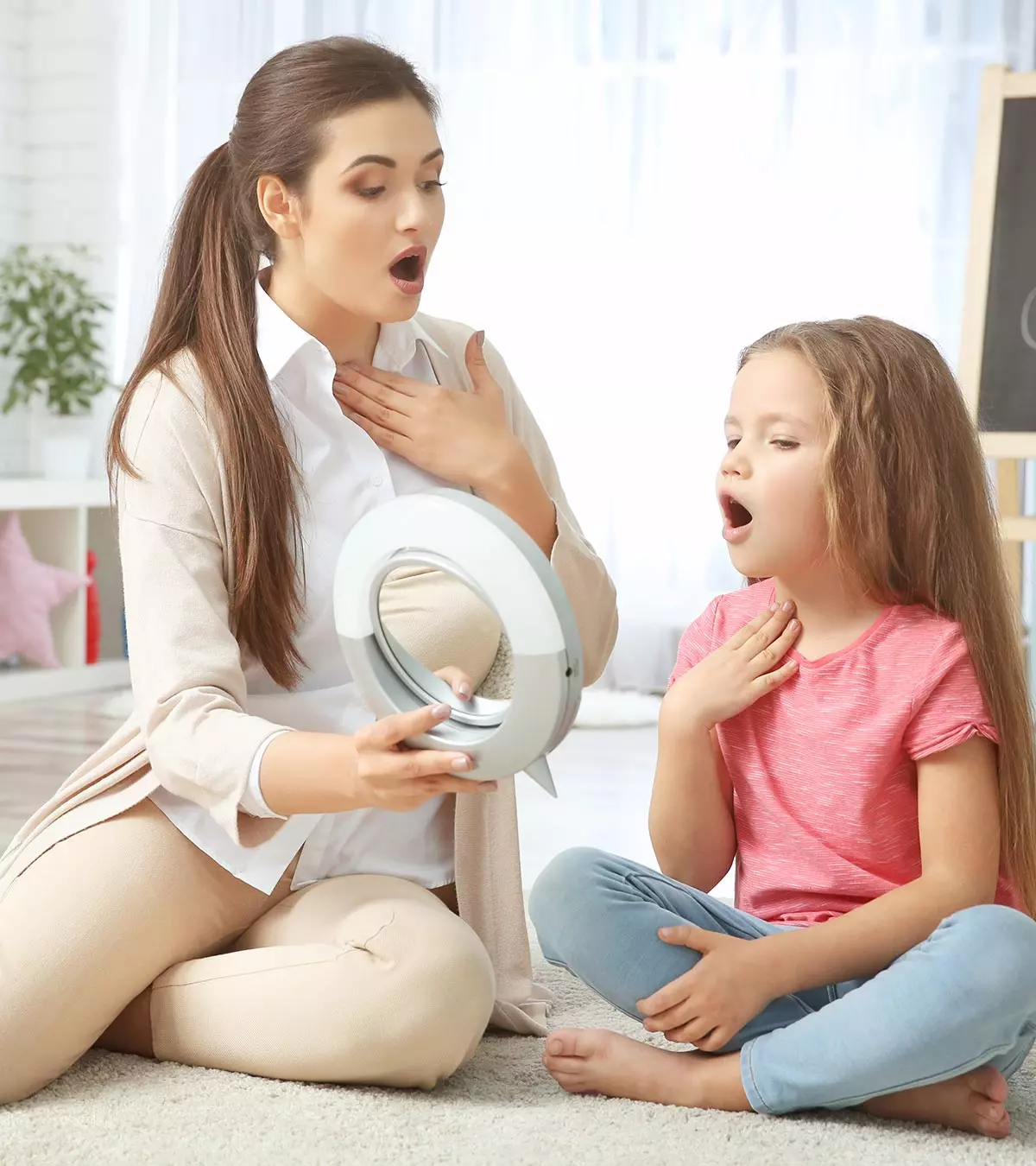
Image: Created with Dall.E
Adolescence is a phase when children go through several changes as they journey from childhood to maturity. It is also a vulnerable time for children since they may experience several problems of adolescence, which may impact their mental health and overall well-being and lead to significant problems later in life. Concerns about adolescent behavior are also common during this time, making it difficult for parents to connect with their children.
Creating awareness about adolescent problems and understanding the challenges they cause is crucial for parents, educators, and caregivers to provide the necessary support. Continue reading to learn about common adolescent issues and how you can help your children avoid or overcome them.
Key Pointers
- The course of change during adolescence can have negative impacts on mental health, leading to anxiety, depression, and self-harm.
- Do not brush away their problems but talk to them.
- Puberty can lead to physical complexities and low self-esteem for adolescents.
- Explain about the physical changes and tell them how natural they are.
- Adolescents also face new social challenges, such as making friends, fitting in, and forming romantic relationships.
- Address the delicate subject of relationships and dating at the appropriate time with the right examples from your own life.
How To Deal With Common Problems Of Adolescence
Dr. Theodore Kremer, a board-certified pediatrician from St Louis, Missouri, says, “There are many factors that affect adolescents, including physical, emotional, cognitive, and social changes that occur during puberty. The physical changes often cause curiosity and anxiety, and affect self-esteem. The social factors increase their quest for independence. Changes in the brain’s frontal lobe cause adolescents to think more abstractly and make complex decisions. Adolescents are often emotional due to hormonal changes during puberty.”
Adolescence is not an easy time for children or parents. The only way to deal with needs and problems at this age is to know about teenage behavior and be ready to face them. Parent-adolescent conflicts that cause insecure and unstable feelings have a linear association with pubertal maturity. Understanding and dealing with these conflicts positively could help your child be more responsible and social (1). Here is our list of the most common problems, and their solutions that adolescents have to deal with.
Infographic: How To Deal With Common Problems Of Adolescence

Illustration: Momjunction Design Team
1. Physical changes
Physical changes happen due to changes in the teenager’s hormone levels.
- Development of full breasts in girls can be awkward in the beginning. Girls may start to feel conscious about their figure.
- Change of voice and appearance of facial hair in boys is perhaps the most prominent change that takes place during adolescence.
- Acne is one of the major problems.
- Muscle gain sometimes leads to excessive body weight in teens.
- The growth of pubic hair in girls and boys.
- Body odor becomes evident.
- Girls start their periods.
Solution
The best way you can help your teenager get through the stage is to make them aware of these changes.
- Explain that it is normal for the body to change as every teenager goes through it!
- Help them adapt to these changes – acknowledge the change and help them accept it.
- Enable them to stay healthy and fit through a nutritious diet and exercise.
 Quick fact
Quick fact2. Emotional changes and problems
Adolescents go through many changes during these years which also include emotional changes during puberty. Hormones affect your teenager not only physically but also emotionally.
- Adolescence is the age between adulthood and childhood. Teenagers are often confused about their role and are torn between their responsibilities as growing adults and their desires as children. It is a time when young people may experience an identity crisis as they grapple with questions about who they are, who they want to be, and how they fit into the world around them.
- They tend to feel overly emotional (blame it on the hormones). Just about anything and everything can make them happy, excited, mad or angry.
- Adolescent girls are vulnerable to crying.
- Mood swings are common among teenage boys and girls.
- Bodily changes result in self-consciousness.
- Children who hit puberty early may even feel weird.
- Feelings of inferiority or superiority may arise at this time.
- Adolescence is the age when sexual feelings arise in youngsters. Feelings and thoughts about sex can trigger a sense of guilt.
Solution
Puberty can be an emotional roller-coaster ride. And it is normal. Here is how you can help your kid deal with these emotional problems of adolescence.
- Assist them to take care of themselves. Tell your teenagers that it is okay to feel the way they are feeling.
- Encourage them to exercise as physical activity helps keep the serotoniniA chemical that conveys messages throughout the body and influences bodily processes, including nausea, digestion, mood, and sleep (creates good feelings and happiness) levels up.
- Let them talk. Listen to them without judging and avoid giving them advice when they are not ready for it.
- Share your experiences of puberty or let them talk to an older sibling who has gone through the same. It will emphasize that it is okay to feel the way they do.
- Indulging in a creative activity can help them channelize their emotions.
Sharing his thoughts on bonding with his teenagers, Tim Dahi, a father, remarks, “I have set some technology boundaries like device-free meal times, which they, of course, resisted, but the tradition gradually took hold. I did other things, too, like familiarizing myself with some of their interests to get a better understanding of their lives. I’ve found new conversation starters, but some discussions remain strained due to the generation gap (ⅰ).’’
3. Behavioral changes
Overwhelming emotions can lead to impulsive behavior, which can be harmful to your child as well as others. Mostly, it is just teen behavior that will last as long as their adolescence.
- Adolescence is the time when children develop and exercise their independence, which can sometimes lead to rebellion. This can give rise to questioning the parents’ rules (seen as argumentative) and standing up for what they believe is right (seen as stubbornness).
- Significant developmental change in the brain makes teens moody, tired and difficult to deal with.
- The raging hormones in teenage boys can even push them to get into physical confrontations. They would also want to listen to loud music.
- As a part of their new-found independence, adolescents may also want to try new things and take risks, resulting in careless behavior.
- Sometimes, peer pressure and the need to ‘fit in’ can make them behave in a certain way or develop certain habits that are hard to break.
- Your teen’s dressing, hairstyle, and sense of fashion also change, mostly to something that you may not approve of.
- The most troubling behavior is perhaps your teen hanging out with problem children and adapting to a dangerous lifestyle.
- Lying is one of the common teen behavioral issues. Teens may lie to avoid confrontation with parents or out of fear.
Solution
- Behavioral problems in adolescence can make life difficult for parents. But remember that it is a passing phase, and is entirely normal.
- Gaining your child’s trust is important if you want to help them with behavioral issues. Talk to them and listen to what they have to say. Do not judge or criticize them, as it could worsen their behavior.
- Let them know that you love them just as they are. Encourage them to be true to themselves and not take on a personality just to please others.
- Remember that your adolescent child is not completely independent in dealing with their emotions and needs your support. Help them by telling them what you do when you feel sad, angry, jealous, etc. They can try those solutions to come out of their own emotional issues.
- You will have to intervene if you see them falling into bad company. Remember that adolescents are sensitive and may not take criticism well.
4. Substance Use and Abuse
Teenagers are vulnerable and can be easily swayed to the wrong side. Substance abuse is one of the biggest problems that parents of adolescents around the world have to deal with.
- Peer influence is one of the significant factors that drive adolescents to take up smoking and drinking or to do drugs.
- The tendency to take risk encourages most teens to try smoking or drinking even before they are of legal age.
- What may start as a ‘thrill’, can become a habit if it remains unchecked.
- If there is somebody who smokes or drinks at home, they can become your teen’s role models.
- Poor self-esteem and the need to be ‘cool’ can push adolescents to smoke or drink.
- Easy access to substances like cigarettes, alcohol, drugs, and anabolic steroidsiSynthetic forms of the male sex hormone testosterone used to treat hormonal issues and delayed puberty may increase the temptation to try illicit substances.
The 2019 statistics, as per The Centers for Disease Control and Prevention, report 29.2% alcohol use, 21.7% marijuana use, 13.7% binge drinking, and 7.2% prescription opioid misuse. These figures highlight the need for expansion of prevention programs and practices to effectively address teenage substance abuse.
Solution
- Keep an eye on your child’s behavior. Look for erratic behavior and change in their appetite, sleep patterns, and moods.
- Do not spy on them or accuse them of any wrongdoing. Encourage them to talk and be honest. Tell them what your concerns are and discuss the problem with them.
- If your child is not willing to talk to you, the doctors can ask confidential questions to know if they are abusing any substances. Avoid going as far as a drug test, as that may come across as confrontational and threaten the child.
- If necessary, get your adolescent the appropriate treatment.
 Experts say
Experts say5. Educational challenges
High school is not all about fashion, friends, and parties. Children also have a lot of educational activities on their plate. Dr. Kremer opines, “Adolescents often find academics challenging due to their struggle for independence during a critical time of brain development. Adolescents often want to be independent and do not want parents to remind them about completing their assignments. Their brain is changing in a way that allows them to go from concrete to abstract thinking, which can often cause them to make poor academic choices. Adolescents often develop their set of values and unfortunately, some adolescents don’t make academics a priority.”
- Academic pressure to excel in their studies and secure a spot in college can be a significant source of stress for teenagers, often leading to moodiness.
- Juggling school work, extra-curricular activities (must for college admissions) and chores at home can be tiring.
- Distractions at school can result in poor academic performance, which will add to the pressure.
Solution
- Support your child’s aspirations for college education as what they need is the encouragement to do well.
- You could cut down their household chores to enable them to focus on their school projects when needed. Provide them with a structured yet flexible learning environment. Maintaining a balance between academic responsibilities and personal interests is vital.
- Nutrition and exercise can help them get the strength and endurance they need to get through the hectic high school period.
- If you notice that your child is experiencing academic stress and feeling overwhelmed with their daily activities, it may be helpful to reduce the number of tasks they are expected to complete. Adolescents have not yet fully developed their lung capacity, and therefore may tire more quickly than adults.
6. Health problems
Adolescents are vulnerable emotionally and physically. Without proper nutrition and healthcare, they are susceptible to illnesses. According to a 2015 WHO report, 1.3 million adolescents died in 2015, a majority of them had preventable diseases.
- Teenagers have a hectic schedule as they hop from one activity to another with little time to eat or rest properly. Unhealthy eating habits prevent them from getting the nutrition they need.
- Consciousness about their body can lead to eating disorders, especially in girls. Adolescent girls who worry about their weight and appearance can develop disorders like anorexiaiAn eating disorder characterized by severe food restriction and an intense fear of putting on weight or bulimiaiAn eating disorder that allows you to quickly overeat and purge the food by vomiting or using laxatives .
- Stress can also lead to loss of appetite and sleeplessness in young children.
- Unhealthy eating habits and a less active lifestyle could also lead to obesity – this is often the case when your child consumes a lot of empty calories through fast food and sodas.
Solution
Parental guidance can help abate health problems in adolescence to maintain a healthy lifestyle. Lead by example and encourage your children to eat healthy food, exercise right and sleep on time.
- Ensure they get nutrition through their meals. Give them a balanced diet.
- Be there for them emotionally and physically as this will help them deal with any possible disorders.
7. Psychological problems
Research has revealed that around 50% of mental health disorders that adults have, begin at the age of 14. In fact, one-third of adolescent deaths are suicides triggered by depression (4). If your child is overly moody and is not eating or sleeping at all, it is imperative you get professional help for them.
Anxiety and depression are prevalent among youth. Many children exhibit signs and symptoms of depression early on, and their friends and peers may be the first to notice it. A study suggests that 70% of teens reported that their peers suffer from psychological problems such as anxiety and depression (8)

US teenagers report anxiety and depression as major problems in their peers
Source: Most U.S. Teens See Anxiety and Depression as a Major Problem Among Their Peers; Pew research centerThe most common mental health disorders observed during adolescence are anxiety and mood disorders. Social phobias and panic disorders are common among this age group. Girls may tend to have more vulnerability to develop depressive disorders than boys (6).
- Teenagers may have self-esteem or confidence issues. The feelings of inferiority or superiority often arise from their appearance, and acceptance of their body – skin color, beauty, and figure.
- Poor performance in academics and low IQ can also demotivate them. They develop the ‘I’m not good enough’ attitude towards life.
- Depression is one of the common psychological problems associated with adolescence.
- The stress and pressure of adolescence can create anxiety related issues, while mood swings can lead to conduct disorder or oppositional defiant disorder.
- Eating disorders are also psychosomaticiThe onset of physical symptoms without a known medical reason or influenced by psychological factors as they start with the adolescent having a poor self-image and the need to change the way they look by any means.
Solution
While moodiness and temper tantrums are normal in teenage girls and boys, they may not always be what they seem. Identifying symptoms of psychological problems in adolescence is not easy and needs the eye of an expert.
- Most of the time, talking about the problems and maintaining a healthy lifestyle can prevent the onset of depression.
- If your child is overly moody and cynical, it is time to intervene and seek professional help if necessary.
- Sometimes, your teenage girl or boy may be unhappy only at home, and doing fine outside. Talk to the child’s teachers and friends to know if they are moody and disoriented at school as well. If they are, then it is a cause for concern.
- Do not brush away their feelings, as that can make things worse.
- Encourage them to communicate with you. For this, you need to talk to them. If you think your child would not take it easy, talk to them in the car where the chances of confrontation are fewer as you are not face-to-face.
8. Social problems – dating and relationships
Social changes during puberty are one of the phases every adolescent has to go through. Attraction to the opposite sex begins during puberty, and for some teens, this can trigger feelings of social anxiety. Adolescence is the time when their sexual or reproductive organs start developing. At such a vulnerable time, it is but natural for teens to feel awkward in social situations.
- Teenagers want to have an identity of their own. They tend to look up to role models at home or outside.
- Adolescents also start thinking about what is ‘right’ and ‘wrong’ and question your take on certain things.
- They need time to understand and get comfortable with their sexuality. Girls and boys start experiencing ‘weird’ feelings towards the other sex and may not know what to do about it.
- For certain adolescents, their sexual identity can cause confusion, anxiety, and discrimination. Due to their sexual orientation or gender identity, they may face harassment or ostracism, which can be incredibly challenging to navigate.
- This is the time they start dating. Your adolescent may not be comfortable talking to you about it and may go with little information or misinformation they have about it.
- Competition is another important aspect of a teenager’s social life. Your child may compete with her peers in anything and everything. Their spirit of competition speaks a lot about their perception of self – whether they have a positive self-esteem or a negative one.
- Sexual feelings and thoughts of sex may seem wrong to an adolescent, because of which they may feel guilty.
- Their social circle expands during this time as they seem occupied interacting with friends on social media sites, through their phone and outside.
Solution
Here is how you can deal with social problems of adolescence –
- Dating, romance, and sex are delicate issues that your teenager may not be comfortable talking about. Don’t make it more awkward for your child. Be confident and rational when discussing the subject.
- Your child may seem to spend more time outside than with you. Accept that your adolescents are discovering a whole new world. Just let them know you are there when they need you.
- Sharing your dating and social life experiences in school can put them at ease sometimes.
9. Sexual health – unplanned pregnancy and STIs
The development of secondary sexual characteristics during adolescence gives rise to new feelings in teenagers and pushes them to experiment with their bodies.
- Adolescence is the time when teens experience their first kiss, the intimate dance with their ‘boyfriend’ or ‘girlfriend’ and secret make out sessions.
- Without proper guidance, teenagers may become sexually active before they are ready. This could result in unwanted pregnancies. Unwanted pregnancy is the biggest risk that adolescent girls face.
- Unprotected sex can also lead to sexually transmitted diseases like HIV.
Solution
- Have ‘the talk’ with your child as they may already be learning about sexual health and reproduction at school. Your duty as a parent is to ensure that they understand the importance of safe sex.
- The hormonal changes in teenagers may make them act impulsively. Your teen may not like it but it is important that you talk to them about the consequences of unprotected sex and how it can change their life.
- Awareness is the only way to prevent early pregnancies and sexually transmitted infections (STIs) in adolescents.
10. Addiction to cyberspace
The advent of social media has changed the way we interact with each other. It has affected teenage lifestyles the most.
- Your teen may seem to spend hours on the phone, texting, talking or simply playing.
- Adolescents addicted to the internet tend to have fewer friends and a less active social life. They lead solitary lives and are happy browsing the internet for hours. (7)
- Addiction to cyberspace also cuts short their physical activities, resulting in an unhealthy and sedentary lifestyle.
- Internet addiction adversely impacts academic performance.
- Social media apps can also lead to cyberbullying and unrealistic comparisons to peers. These issues can exacerbate feelings of inadequacy and anxiety.
Solution
- Do not assume that your child is addicted to the internet just because he or she spends a lot of time in front of the computer. They could be doing more productive things on the system other than surfing the net.
- Do not say ‘no’ to the Internet. That will only make them adamant. Instead, talk about your concerns and help them work on other things that do not require a computer.
- You could use parental controls, but that may not be taken well by your teen – remember that they are not kids anymore. At the same time, they may also not have the judgment to make the right choices. So guide them as a parent, but never decide for them.
- Enroll them in activities that encourage them to interact with others. Have family activities that will make them want to spend less time at the computer.
- Have some cyber rules and boundaries for everybody at home. Limit the use of the mobile phone to a few hours in a day, and avoid bringing the phone to the bedroom as it is likely to affect a person’s sleep.
11. Aggression and violence
Aggression is especially a concern with adolescent boys. Young boys start to develop muscles, grow tall and have a coarser, manly voice. In addition to that, they are moody and vulnerable and can let others get under their skin.
- Adolescent boys can get into fights at school.
- Worse, they could start bullying others, which is a major problem that adolescent boys and girls have to deal with.
- Boys may fall into bad company and be drawn to acts of violence, vandalism, and aggression. They could be easily swayed to own or use a firearm or a weapon too.
- Impulse acts of violence can lead to serious consequences, including death. According to the WHO report, interpersonal violence causes around 180 adolescent deaths around the world.
- Teenage girls are likely to suffer violence or aggression by a partner.
Solution
Children tend to imitate what they see at home. The following remedies for problems of adolescence will help abate aggression, violence and related issues.
- Teach your children to be kind and considerate. Nurturing relationships at home can help them become less aggressive.
- Prevent access to firearms and alcohol early to prevent violence.
- Teach them life skills and the importance of compassion. Lead them by being their model.
- Avoid exposing them to violent stories, games or movies at an age when they cannot differentiate between what is right and wrong.
- Make them try alternative ways, such as going for a run, doing yoga or using a punch bag, for venting out their anger. This way, they understand that it is alright to be angry but how they deal with it makes all the difference.
When You Know, You Can Help
Parents play an important role in adolescents’ behavior development (8). A strong support system, comprising family, friends, and mental health professionals is essential to educate teens about potential challenges and their solutions. When these supporters set clear rules and encourage open communication without being judgemental or rude, it can help them navigate difficult situations, such as family conflicts and drug use.
Frequently Asked Questions
1. How can parents help their adolescent children deal with identity issues?
Parents may help adolescents improve their self-awareness by identifying their likes, dislikes, negative past experiences, feelings about themselves, and strengths. They may also help children identify their emotions (sadness, frustration, confusion, or anger) and let them know that venting their feelings is okay (9).
2. What are some common communication problems between parents and adolescents?
Parental criticism worsens communication, and it is advisable to reach conclusions together after a thorough discussion with children. Another communication problem is that adolescents may find it difficult to freely express feelings and perspectives, causing them to engage in autonomous behaviors without their parent’s approval (10). In such cases, it is essential to interact with the adolescent calmly without being judgemental.
You may have been a teenager yourself. But once you become a parent to a teen, you seem clueless. Think about it – your adolescent is at an age that you have already been through. Be empathetic and try to understand what your child is going through. That makes dealing with their problems easier.
Personal Experience: Source
MomJunction articles include first-hand experiences to provide you with better insights through real-life narratives. Here are the sources of personal accounts referenced in this article.
ⅰ. My teenagers;https://medium.com/afwp/my-teenagers-65b4148a4be4
References
1. Brett Laursen, et al.; Reconsidering Changes in Parent-Child Conflict across Adolescence: A Meta-Analysis; The United States National Library of Medicine
2. 13.3: Physical Changes in Adolescence
3. Use of Tobacco Products, Alcohol, and Other Substances Among High School Students During the COVID-19 Pandemic — Adolescent Behaviors and Experiences Survey, United States, January–June 2021
4. Adolescents: health risks and solutions; The World Health Organization
5. Most U.S. Teens See Anxiety and Depression as a Major Problem Among Their Peers; Pew Research Center
6. Susan J Bradley; Anxiety and mood disorders in children and adolescents: A practice update; The United States National Library of Medicine
7. Hing Keung Ma; Internet Addiction and Antisocial Internet Behavior of Adolescents; The United States National Library of Medicine
8. Parenting of Adolescents; UNICEF
9. Identity Issues;Appalachian State University
10. Teenagers and Communication; Better Health Channel
Community Experiences
Join the conversation and become a part of our nurturing community! Share your stories, experiences, and insights to connect with fellow parents.
Read full bio of Michelle Bowyer
- Dr. Theodore Kremer is a board-certified pediatrician and an assistant professor of Pediatrics at Washington University in Saint Louis. He attended medical school at St. Louis University School of Medicine and completed his residency at St. Louis Children’s hospital. He has four years of experience and has a special interest in well-child care, asthma, and ADHD.
 Dr. Theodore Kremer is a board-certified pediatrician and an assistant professor of Pediatrics at Washington University in Saint Louis. He attended medical school at St. Louis University School of Medicine and completed his residency at St. Louis Children’s hospital. He has four years of experience and has a special interest in well-child care, asthma, and ADHD.
Dr. Theodore Kremer is a board-certified pediatrician and an assistant professor of Pediatrics at Washington University in Saint Louis. He attended medical school at St. Louis University School of Medicine and completed his residency at St. Louis Children’s hospital. He has four years of experience and has a special interest in well-child care, asthma, and ADHD.
Read full bio of Sagari Gongala
Read full bio of Swati Patwal
Read full bio of Apoorva K

















